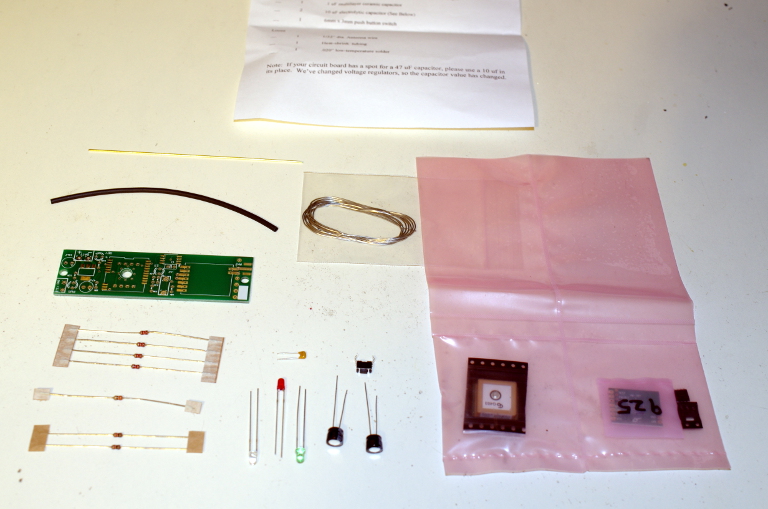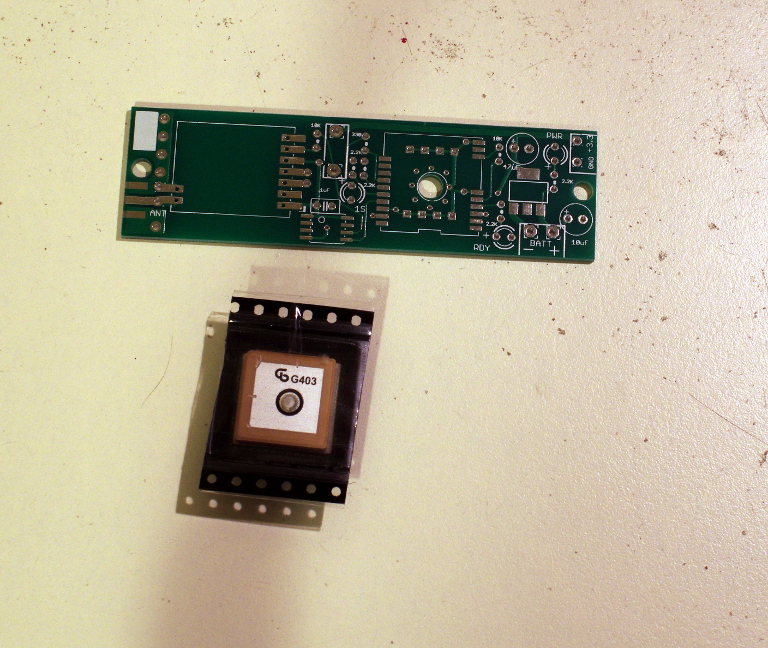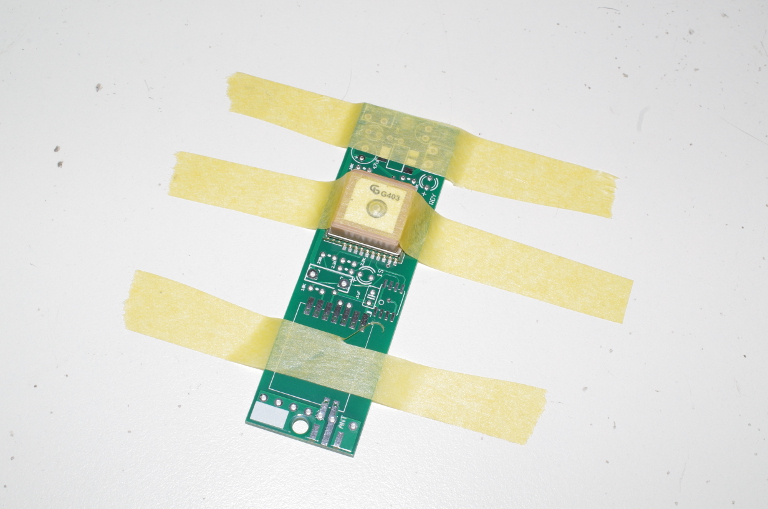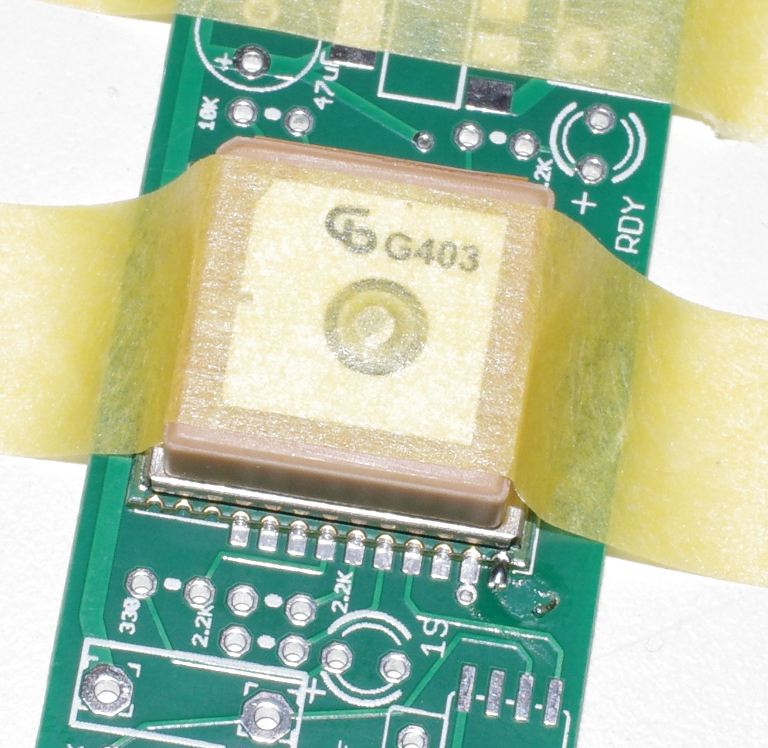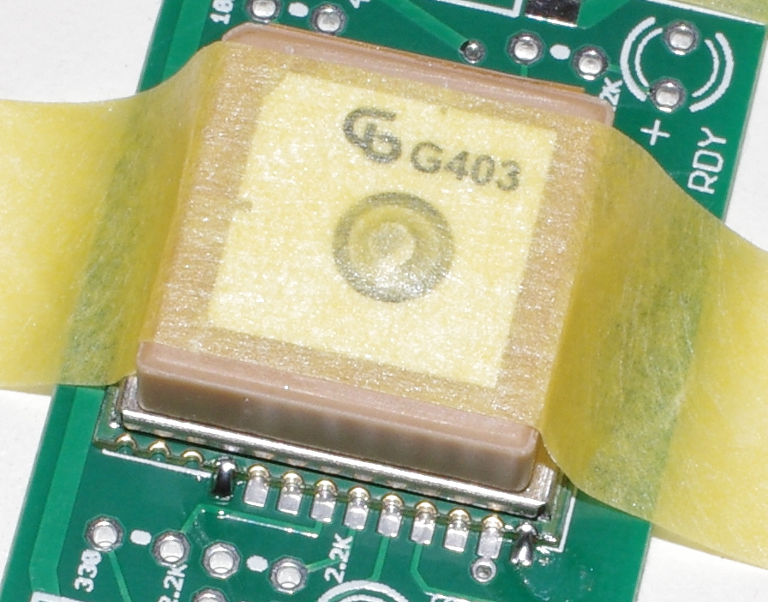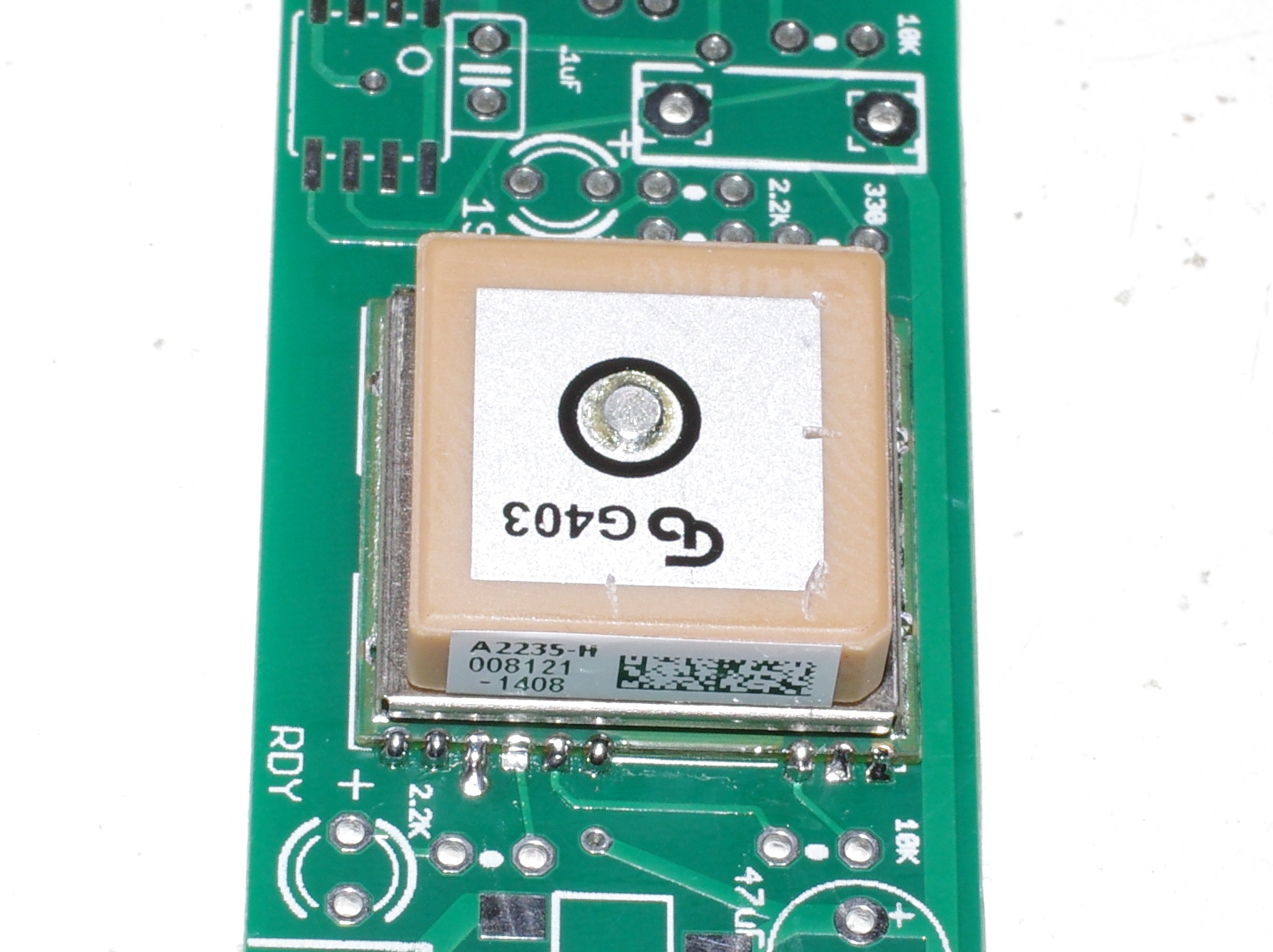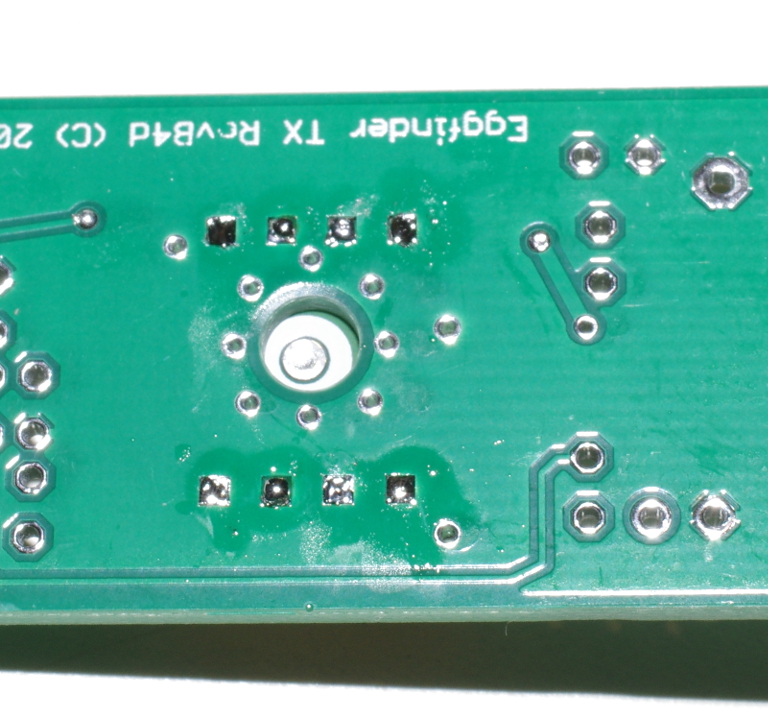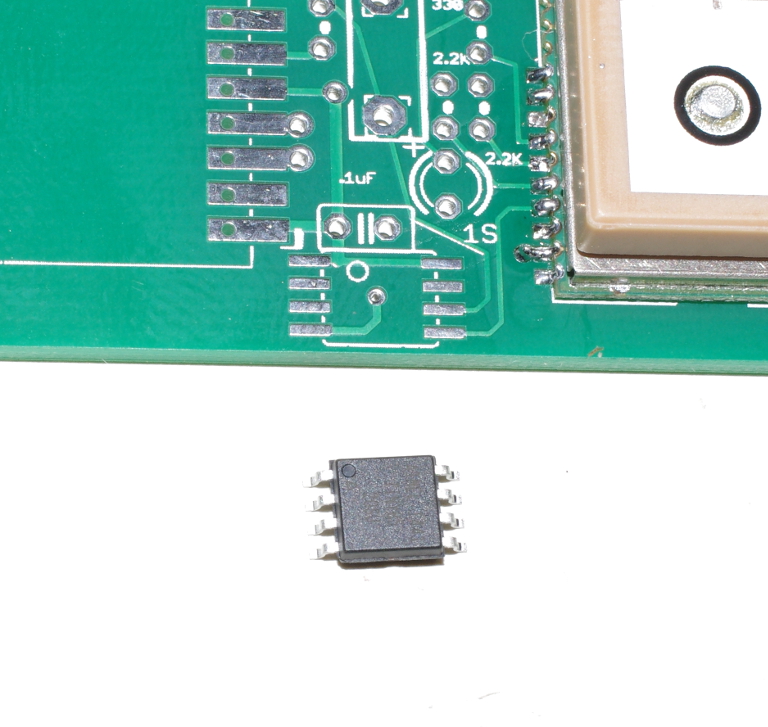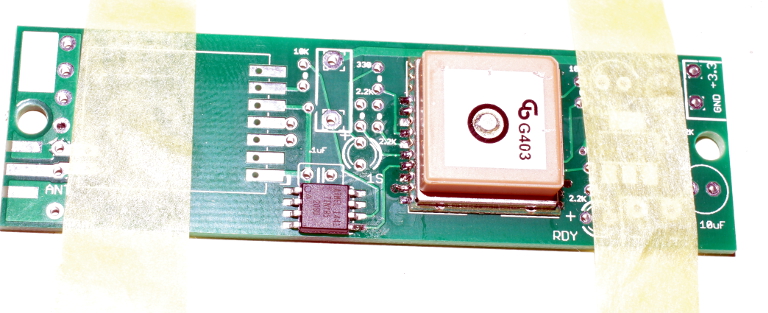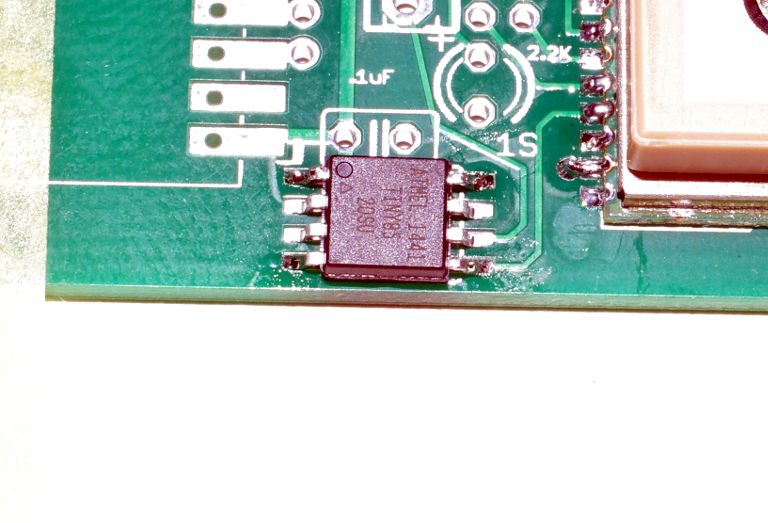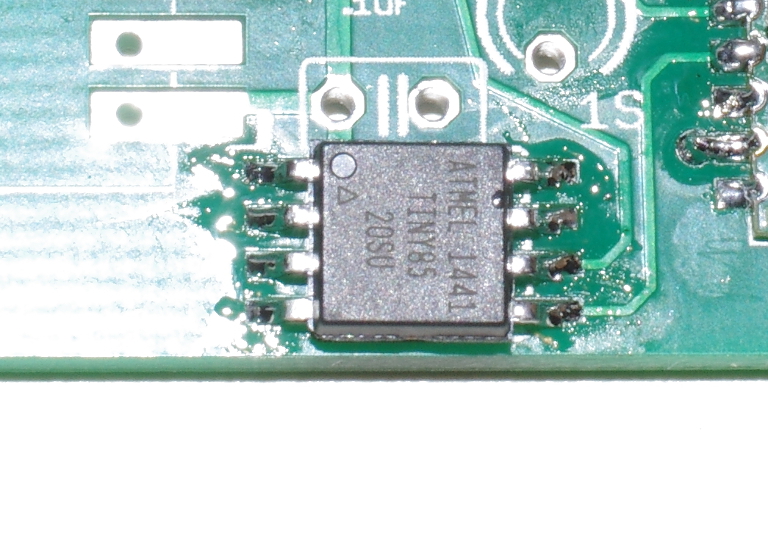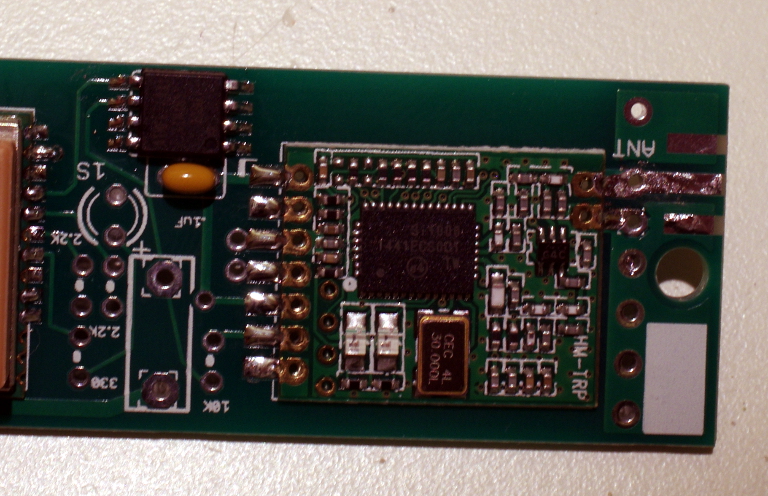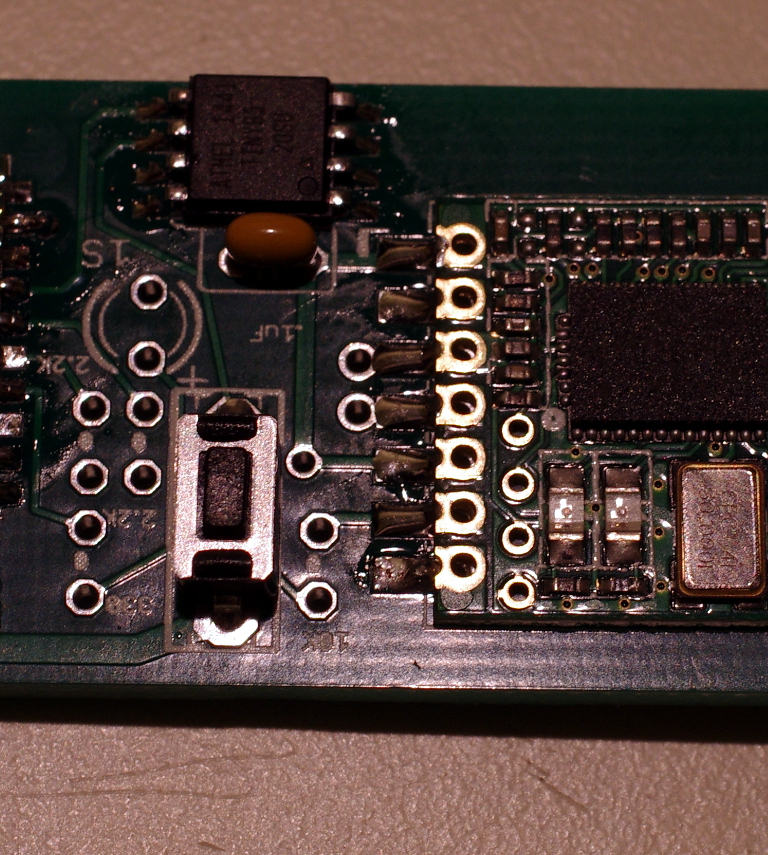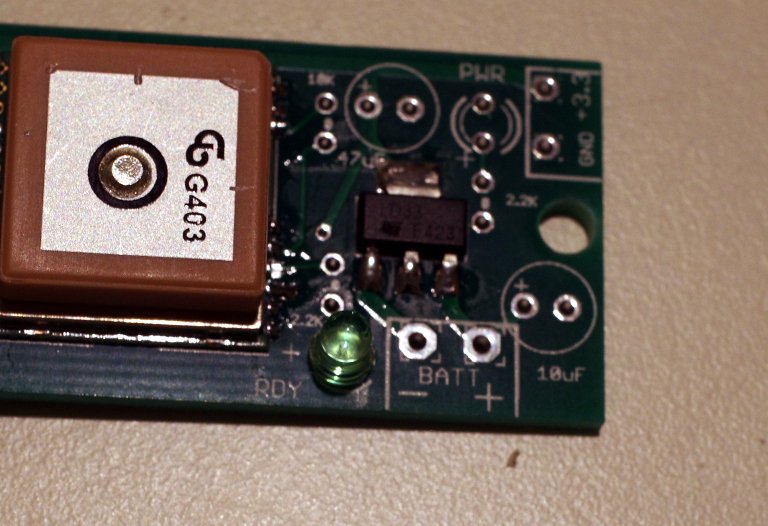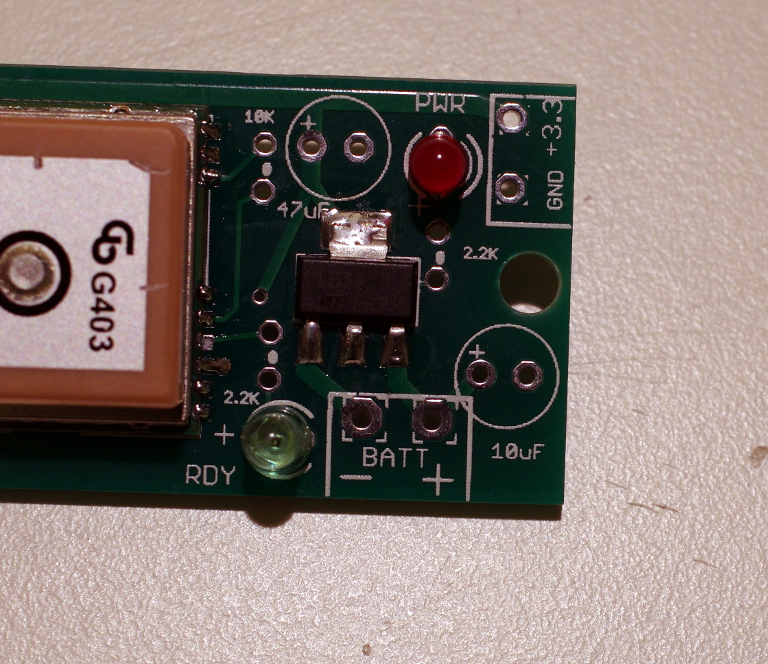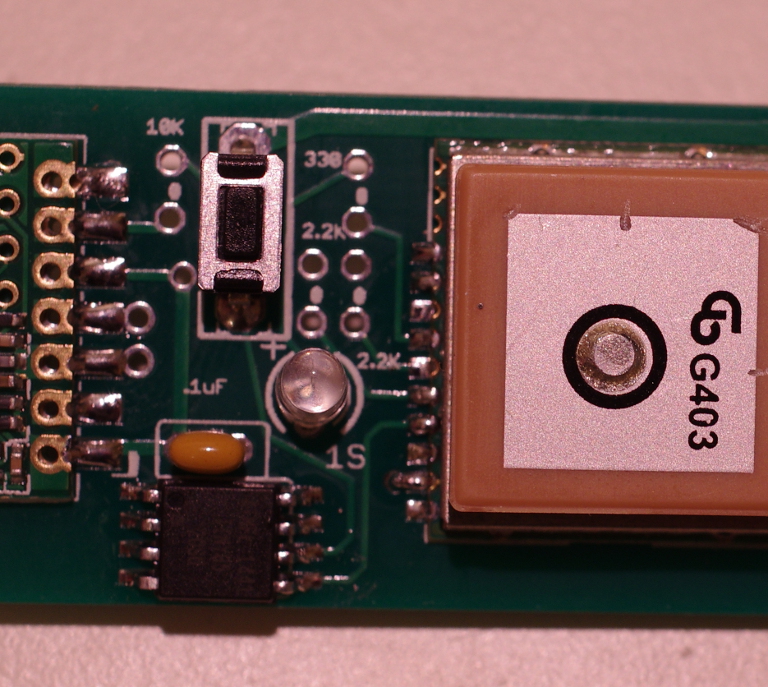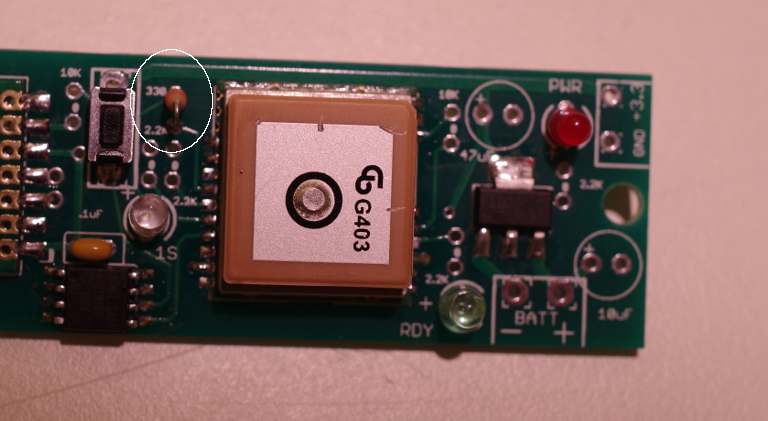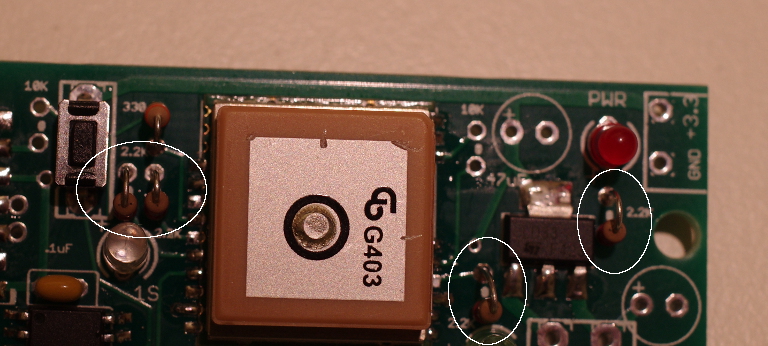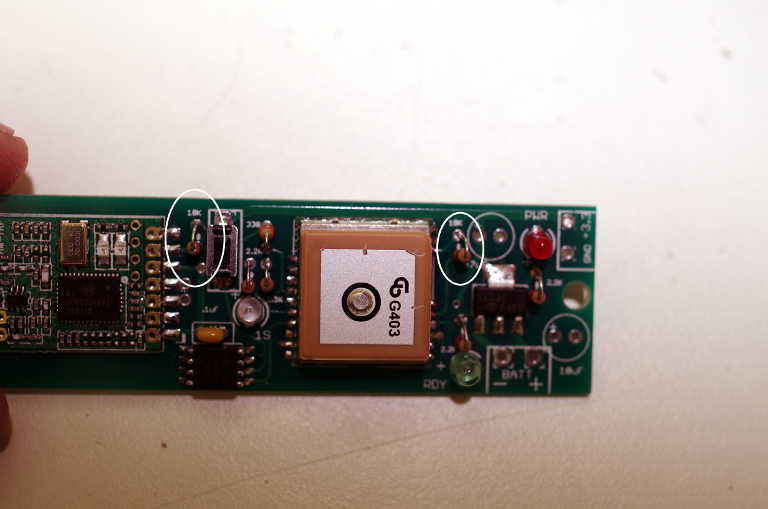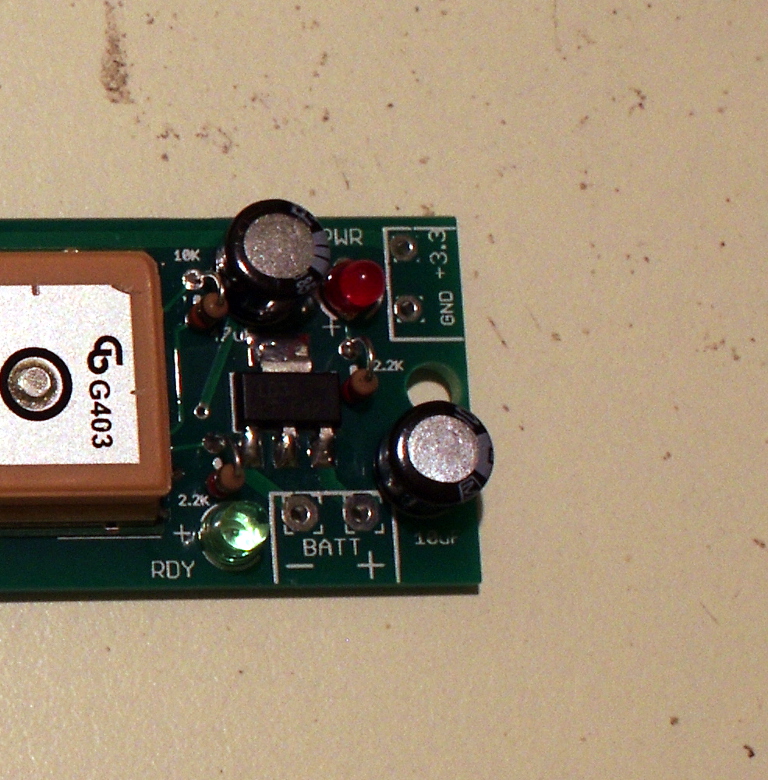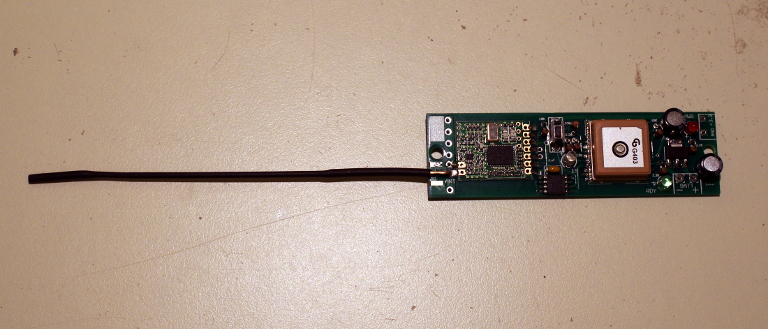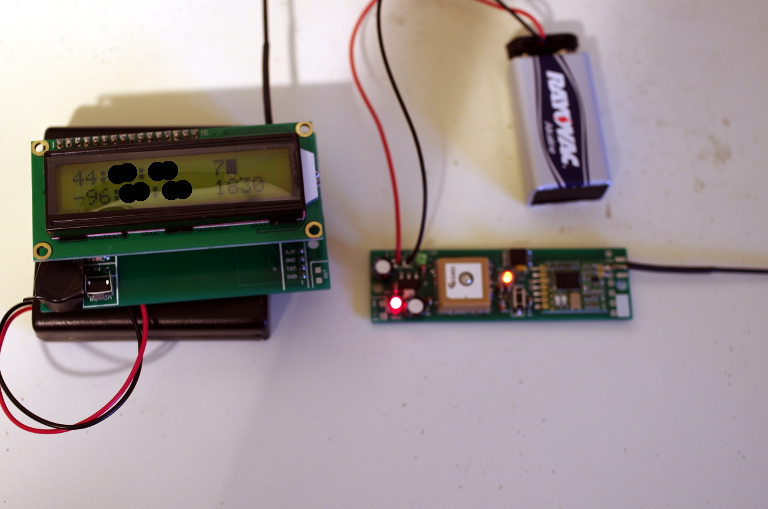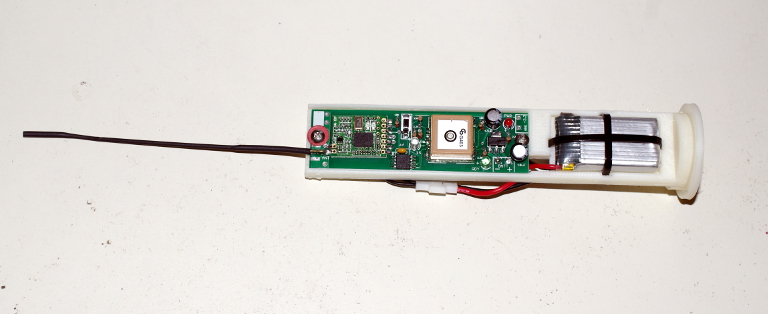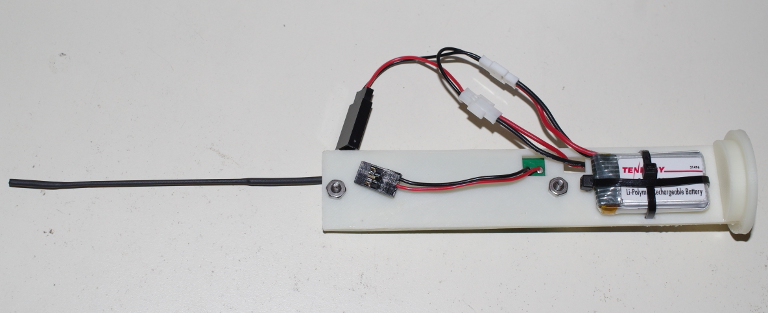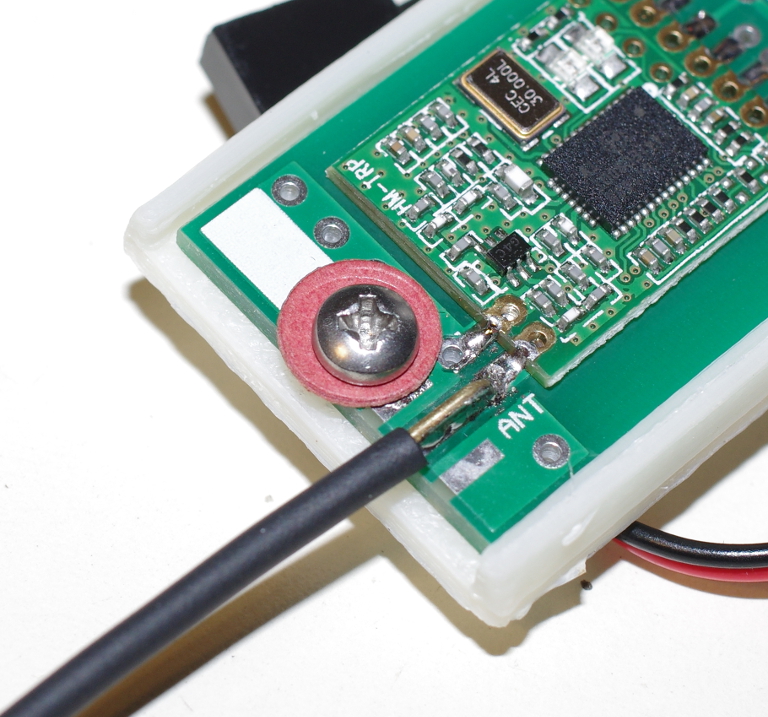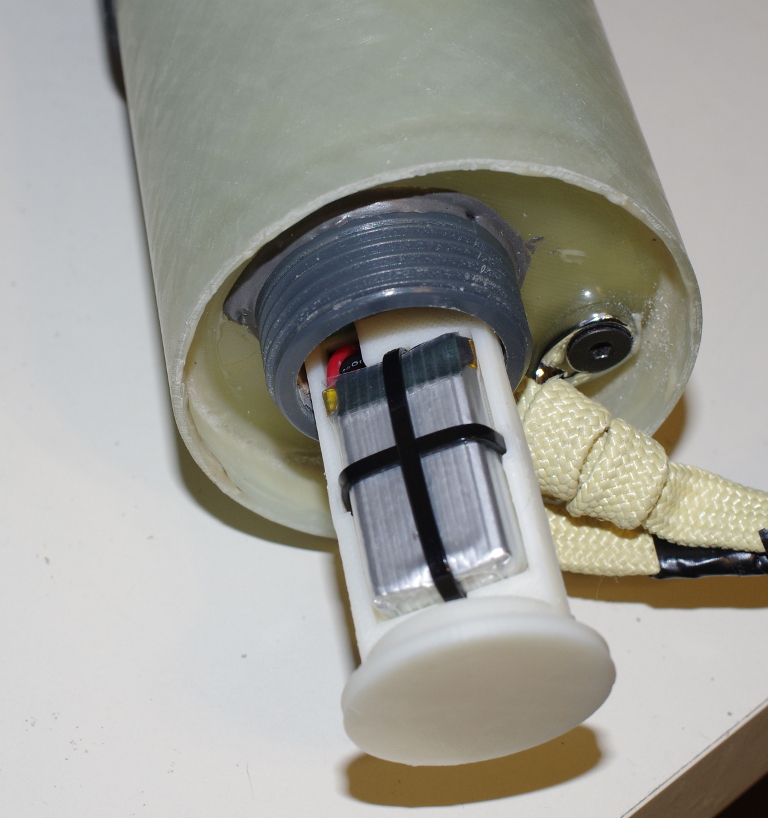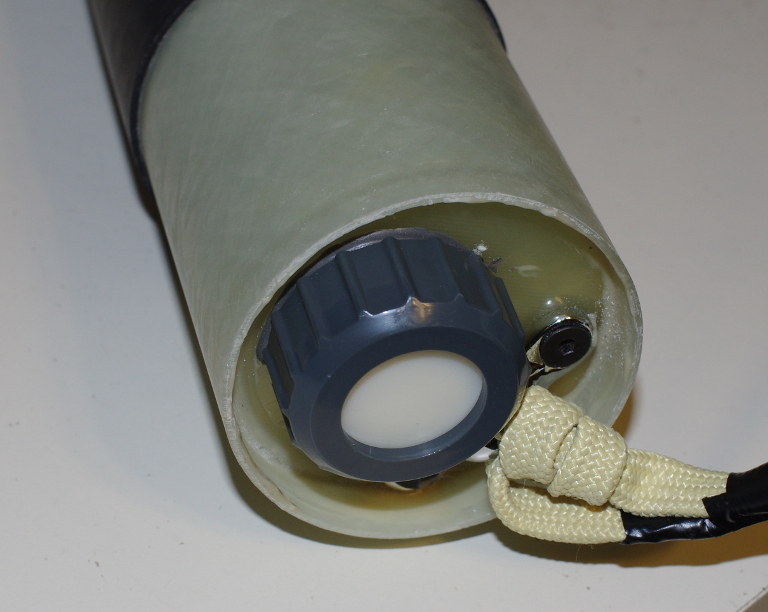Power is up to you. It's advertised as a pretty wide voltage input range, for the purpose of testing here I'll be using a generic 9V battery. Eventually I'll be moving to a LiPo battery. I'm waiting on some connectors in the mail. It's important that you use the correct power input. Use the one marked 'BATT' as it's before the regulator, and will correct any voltage issues before getting to the active components. Do NOT use the one marked 3.3v, as that's a regulated OUTPUT for advanced users. Put too much voltage into the 3.3v holes, and you've just fried both the RF and GPS units.
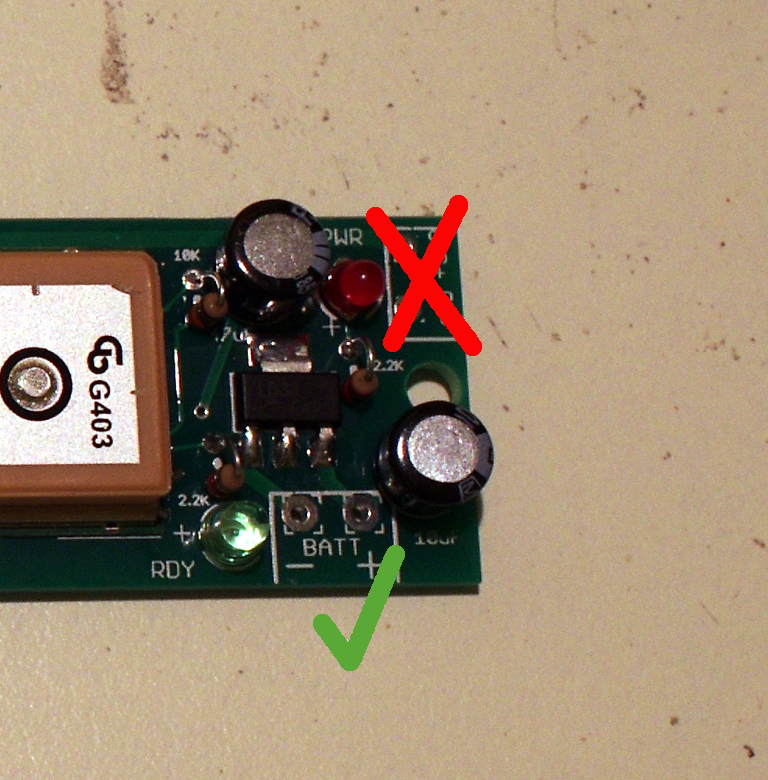
Operation couldn't be easier. Plug in the battery to the eggfinder, and watch your RF unit. If you see a green flashing light, that's actually a bad thing. It means somebody is already using that frequency and you don't want to proceed any further until sorting that out. If you just get a quick flash of both RF lights, and a steady red power light, you're good to continue. Hold down the pushbutton for a second, then release, and the green 'READY' light will come on. You'll also see the red light on the RF unit blinking every second or so.
First time you use it though you'll probably have to set your frequency in the receiver. The Eggfinder LCD receiver instructions explain it better than I can. The frequency of your eggfinder is printed on the outside of the package, plus would also be written on the pink baggie the GPS unit was in. Mine is 925. But if the frequency is already set, then just turn on the receiver and wait a bit. You should see a green blinking light on the RF unit of the receiver, which blinks in sequence with the red light on the transmitter. This means you have good reception between the two. Now you just need to wait for the GPS fix.
Might take a few minutes, particularly indoors. GPS can be slow to link enough satellites sometimes. Once you do get a fix, the receiver will start chirping every second, and will display the coordinates of the transmitter. Top right is your # of satellites. If that hits 5 or more, the orange light on the transmitter should also be blinking every second or so. The box next to the # of satellites is the quality of the fix. The more filled in the box, the better. Bottom left number is your altitude. Remember this is measured ASL (Above Sea Level) not AGL (Above Ground Level), so unless you're near the beach it should be well above zero. For instance, where I live is about 1830 feet ASL. I have a good fix on 7 satellites, and I had to blank out the coordinates because it really was tagged right at my workshop at home.
That's it for the time being. I'll work on the LCD case later, same with antenna updates, and mounting.




